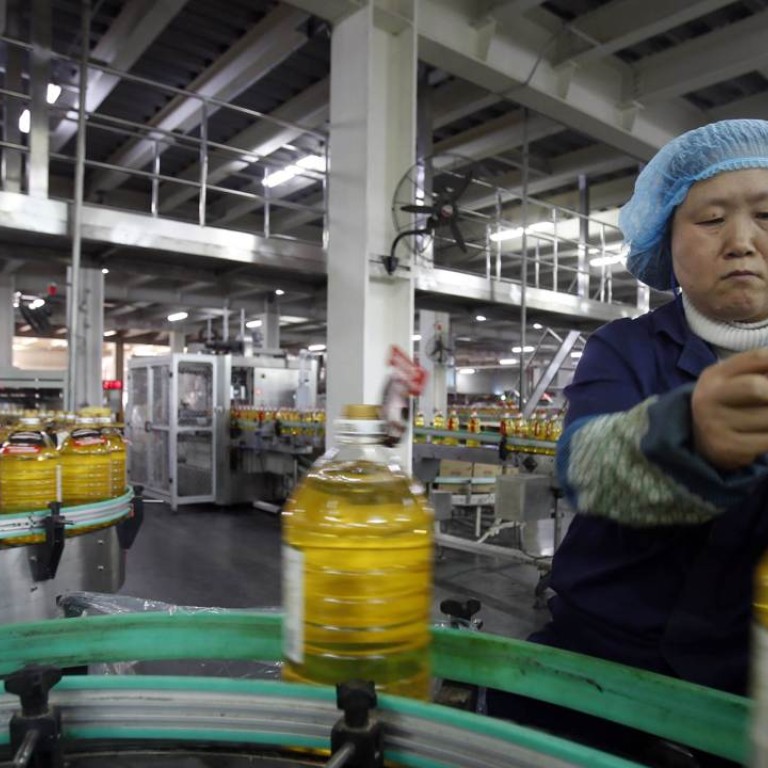
New | Challenges and strains await for China’s 2020 growth vision
China’s target of 6.5 per cent annualised economic expansion over the next five years will no doubt be reached, but there is much work to be done
No one should doubt China’s capacity to meet the 6.5 per cent annualised economic growth target over the next five years unveiled by Premier Li Keqiang on November 1, but attaining its 2020 vision will mean overcoming substantial challenges at home and could lead to strains abroad.
For example, while China’s new business model requires the bolstering of the service sector to offset a fall in manufacturing activity, addressing industrial overcapacity takes time if the attendant social and financial costs are to be manageable.
A measured approach is required with regard to industries where output now outweighs local or indeed international demand, even if that raises hackles abroad.
“We have reduced more than 700 million tonnes of production capacity, and you can just imagine our task of finding jobs for those workers,” said President Xi Jinping on his recent state visit to Britain, when the scale of China’s steel exports was raised.
Nevertheless, as China seeks to rein in overcapacity, it must be preferable to proceed with a degree of caution lest moving too quickly creates even greater ripples that adversely impact the global economic outlook.
Quite simply, China is trying to work off years of credit-driven investment bets, many of which no longer look like winners. That means embracing the unpalatable truth that a lot of money that has been lent by China’s biggest banks is never going to be repaid and the loans will have to be written off. That needs careful but strong management.
It is already notable that China’s five largest banks are all setting aside more capital as impairment losses on assets rise.
And while China’s loosening of monetary policy might have eroded commercial lenders’ net interest margins, Japan’s historical experience suggests that is the right course of action assuming the issue of bad loans is simultaneously addressed, even if local banks would disagree.
As September’s “Geneva Report on the World Economy” noted, when Japan eased monetary policy precipitately in the early 1990s it failed to appreciate the extent of Japanese banks’ bad loans.
Consequently, the report said, the banks “continued to lend to essentially insolvent ‘zombie’ firms, at the same time as they were restricting the supply of credit to new firms with better growth prospects”.
That is not a path China will wish to follow.
Abolishing its one-child policy, China might also have had an eye on Japan where the ageing demographic has resulted in a situation where the income tax take from a comparatively smaller working age population has been increasingly directed into higher pension and health care expenditure.
Meanwhile, Japan’s rising numbers of dissaving retirees is now reflected in a lowered overall savings ratio.
No one can know if altering China’s one-child policy will result in a materially higher birth rate that will ameliorate the country’s current demographic situation. A rising Chinese middle class might be less inclined to have larger families. But keeping the policy unchanged would certainly have not helped.
As for the currency, China’s efforts to internationalise the yuan’s use must also be intended to encourage investment into the country that will help offset the costs incurred as China moves to its new economic model.
It has been argued by some that yuan inclusion in the International Monetary Fund’s special drawing rights basket could gradually create some US$500 billion of demand for the Chinese currency.
That said, as Beijing edges to full liberalisation of the capital account, the greater will be the opportunity for money to flow out of China as well as in, which could translate into a degree of yuan weakness over time.
While those kind of capital flows and currency movements would be quite normal in most major economies, it might unnerve many, particularly US politicians, who back China’s moves towards capital account liberalisation but simultaneously dislike the idea that that process would mean the yuan could then actually weaken as well as rise.
The world may have to get used to the fact that there will be occasions in the near future when China’s currency will again slip in value. While that does not automatically imply China means to “steal” other countries’ economic growth through a weak yuan, it will raise international eyebrows.
Yet Beijing is clear-sighted in its 2020 vision and although the journey ahead will not be without bumps in the road at home and abroad, the global economy will ultimately gain when China arrives safely at its five-year economic destination.

